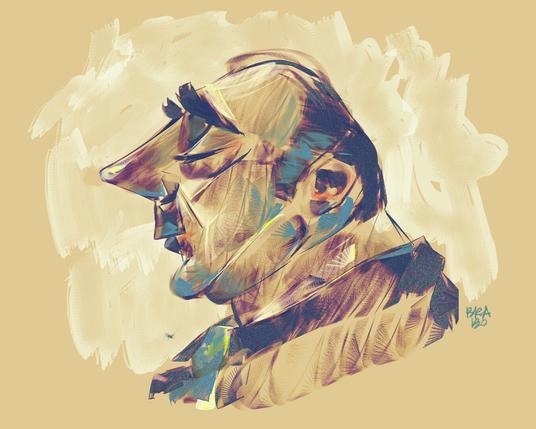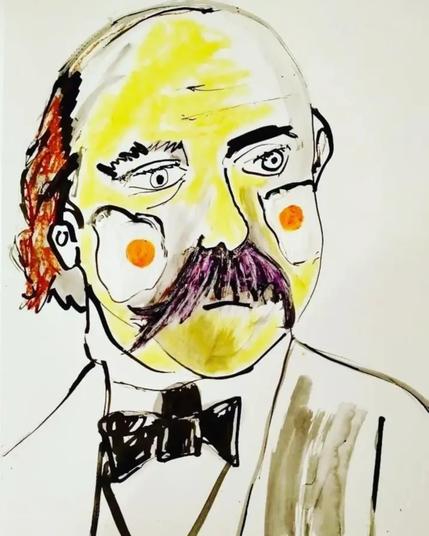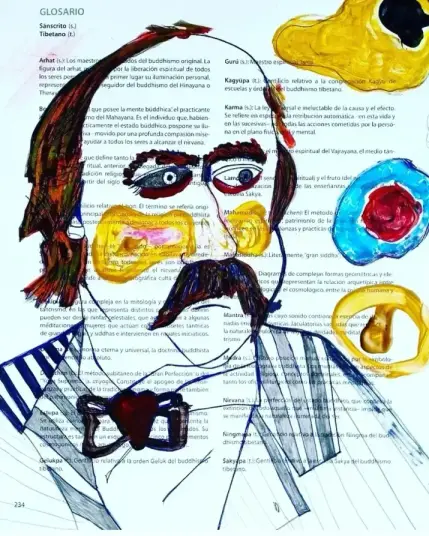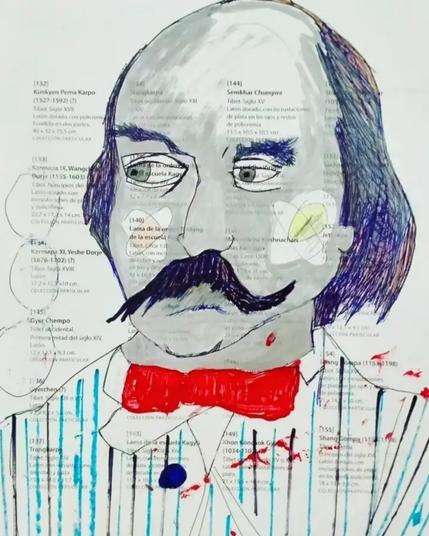This pronouncement by Nietzsche in Twilight of the Idols (maxim 34) is an obvious overstatement but it makes the point effectively. There can be something particularly valuable about the ideas which occur to us when we are walking. In his claim that “Assiduity is the sin against the holy spirit” Nietzsche contrasts sitting ideas to walking ideas. The meaning of assiduity is “constant or close attention to what one is doing” but the etymology tells an interesting story about how this meaning emerged.
It developed this meaning through the 15th century from the Latin assiduitatem meaning “continual presence”. Assiduity is the quality of the attention which arises from our continual attention. But this originally derived from assiduitatem: ad- (“to, towards, at”) + sedeō (“sit; settle down”). This is the attention facilitated by being sat in relation to something. To point ourselves at something, to remain with it, to immerse ourselves in it. To sit and focus. To be at our desks. To be assiduous has positive connotations which are, in many sense, justified. If we are unable to sit with a task, we are unable to complete things. If we are unable to sit with a task, we are unable to develop our skills. If we are unable to sit with a task, we are unable to push ourselves. These practical requirements are why assiduity has been seen as a virtue.
In calling it a ‘sin’ Nietzsche is drawing attention to the limitations of assiduity. The single-mindedness involved in it is limited and limiting. It closes down possibilities rather than opening them up. Nietzsche cites Flaubert’s maxim that ‘On ne peut penser et écrire qu’assi’: One can think and write only when sitting down. This is what he’s pushing back against with such force, in a book with the subtitle how to philosophize with a hammer. There is so much lost if we imagine thinking can only take place when sitting down. If thinking is defined in terms of its assiduity, thinking is diminished for Nietzsche, who was a compulsive walker. As Audrey Watters reflected in a recent essay (HT L.M. Sacasas):
Walking is how I get to know a place, it’s how I know a place. Yes, I could look at a map. Yes, I could ride the bus (take a cab, drive a car, whatever) with a similar purpose in mind. I could look out the vehicle’s window and see where I’m headed — if you are driving, your eyes had better be on the fucking road though. But there’s something about the pace with which I move while walking that allows me to see more, to process more. When I run or ride, I’m moving too quickly (even if I’m not moving all that quickly); my surroundings are a blur – not from speed so much as from cognition.
Walking lets you read the world — and much like the slow, contemplative mental processes involved in reading a book, the pace with which one moves through the world while walking allows for a different, deliberative kind of seeing. You notice more. You think more.
https://2ndbreakfast.audreywatters.com/the-world-reveals-itself-to-those-who-walk/
There are modes of engagement with the world which cannot be accessed assiduously. They involve opening out to receive what Hannah Arendt once described as the “almost infinite diversity” of the appearances we find in the world, “the sheer entertainment value of its views, sounds, and smells” (pg 20). They involve coaxing the sight and sound into your life, as C Wright Mills once advised an unhappy friend:
The trouble with you and what used to be the trouble with me is that you don’t use your goddamned senses; too much society crap and too much mentality and not enough tactile and color and sound stuff going on. So now if you’re like I was a year ago, you’ve got to coax the sight and sound back, carefully tease it to life aain and it will fill you up.
“Society crap” and “too much mentality” is where a restrictively assiduous approach to thinking gets you. In contrast the value of walking ideas comes from the process through which you derive them, the openness and non-linearity which comes through ambulation. L.M. Sacasas notes the Latin phrase: “solvitur ambulando which means “it is solved by walking”. Psychologists increasingly talk about this in terms of mind-wandering: letting your mind drift in ways not defined by a task. But there’s a risk that a recognition that problems are solved through walking lends itself to an impulse to solve problems by walking. If you instrumentalise walking as a creativity device, you are not thinking through walking in the sense advocated by Nietzsche. It has to by definition be more open than that.
Or at least that’s what I found myself thinking about when walking home late last night. My headphones had run out of battery and I realised how I’d become prone to continually having a soundtrack when walking through the city at night*. In the morning when I walk to work, usually about 35 minutes across the city, I greedily consume the sights and sounds of Manchester on a weekday morning. I hate commuting but I love this walk, even as I battle the routinisation which inevitably comes from 2.5 years of it. If I’m late for work and I get the bus after the tram, I inevitably feel something is missing.
But in the evening I default to music and I was hit last night by the sense I’ve lost something in the process. It’s exactly when I’m tired that the assiduity of immersing myself in music is what I want most but need least. Those are the points when I want to let my mind unfurl after a complex day, full of ambiguous events which need to condense into meaning. Those are the points at which walking ideas are most likely to emerge.
If you want to enjoy writing then walk. If you want to enjoy walking then be there while you’re doing it.
Not with my hand alone I write:
My foot wants to participate.
Firm and free and bold, my feet
Run across the field – and sheet.
– Friedrich Nietzsche, The Gay Science, Prelude in Rhymes: 52
*I’m fully aware of the privilege involved in doing this, even though for a long time I wasn’t.
https://markcarrigan.net/2024/05/09/how-to-enjoy-writing-13-only-ideas-won-by-walking-have-any-value/
#audreyWatters #Flaubert #LMSacasas #manchester #Nietzsche #Thinking #urbanism #walking




